
Puca Pucara, or Pukapukara, is one of the most fascinating and accessible Inca ruins near the city of Cusco. Its name, which in Quechua means "red fortress", is not by chance; although it refers to the main color of the soil, it becomes more evident at sunset, when the limestone rocks of the place turn an intense reddish color under the last rays of the setting sun, creating a unique natural and visual phenomenon.
This ancient site is known for its impressive military architectural style. It is made up of large stone walls, platforms, terraces, steps, and hallways that cross the hill in an organized way. During the peak of the Inca Empire, it is believed that Puca Pucara played a crucial role as a lookout and checkpoint.
Visiting Puca Pucara is an essential stop on vacations in Cusco and is often included in the circuits of hikes in Cusco to nearby sites like Tambomachay and Sacsayhuamán. Exploring its ruins not only offers a view of Inca military engineering, but also the opportunity to enjoy beautiful panoramic views of the surrounding Andean landscape.
The Puca Pucara Archaeological Site is located in the upper part of the road that connects Cusco with the Sacred Valley, specifically towards Pisac, about 4 miles from the historic center of Cusco city. Its location on a hill allows visitors to enjoy panoramic views of the Andean surroundings.
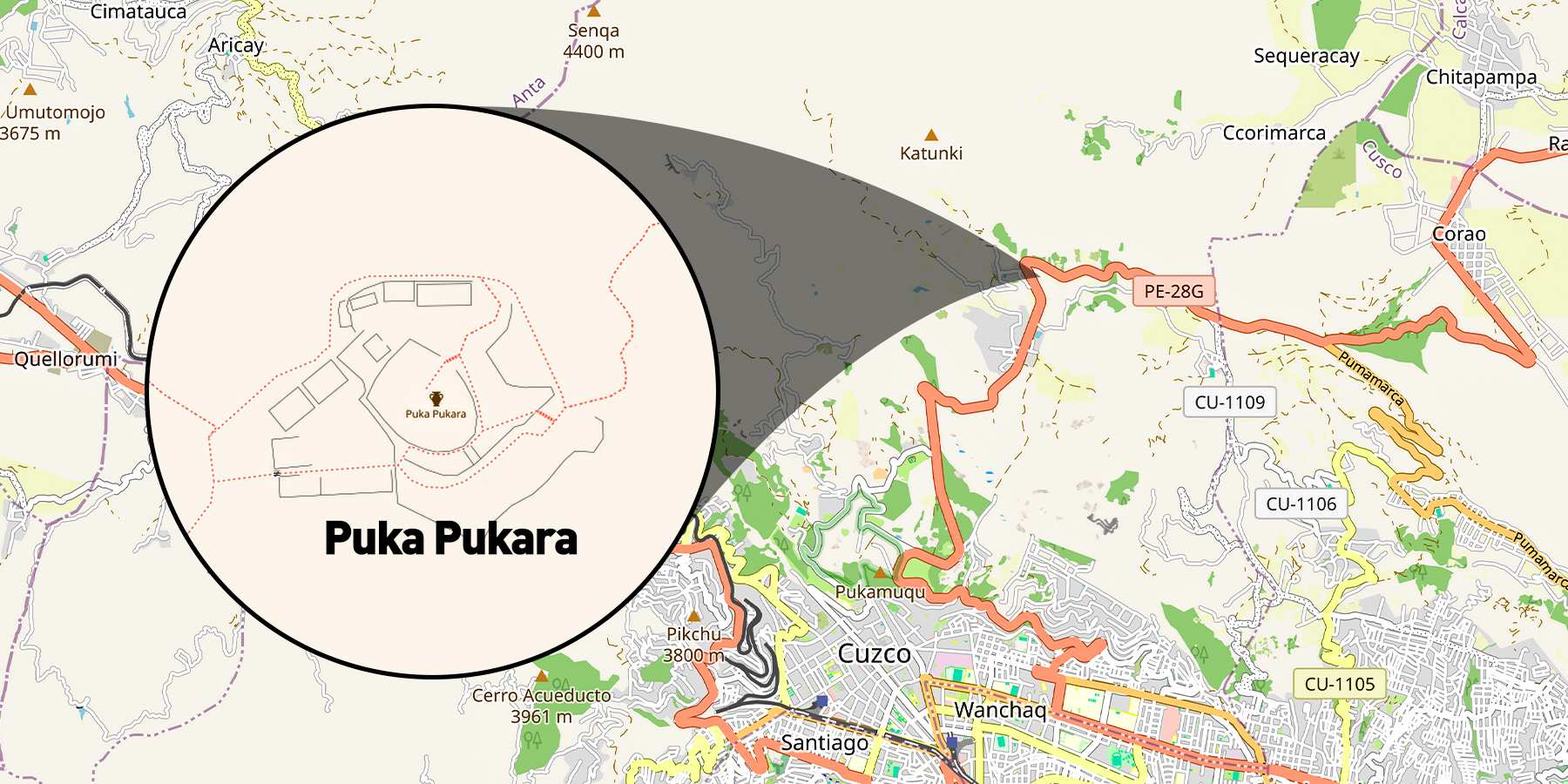
It is important because, according to some chroniclers in the past, when the Inca was about to visit the baths located in Tambomachay, his army remained in Puka Pukara, which functioned as a barracks and tambo. Likewise, it is believed that there was a chincana (tunnel) which functioned as a communication route between Tambomachay and Puca Pucará.
Puca pucara, as can be seen, are words of Quechua origin, the first puca means red and the second pucara describes a fort or military fortress, hence it is called the red fortress.
The current name that it has probably was given to it already in modern times due to the characteristics described above and probably to its use as such (Fortress) at some point in history that remained in the collective memory, however, we must clarify that its original name was lost in time.
Puka Pukara Archaeological Complex, also known as the red fortress, thanks to the color it takes in the twilight evenings, is a military construction of Inca origin, built on a raised platform, composed of high terraces or superimposed platforms, passages and stairways that interconnect the entire place.
Like many important places, this site must have had several purposes, being an administrative center as well as a military fort that fulfilled religious and even astronomical functions.
The existence of a "Chinchana" or cave in Pucapucara give rise to stories that say that it could be secretly connected with Tambomachay, since this last place is believed to be a resting center for the Inca, it would be his personal guard and entourage at his service. what I would expect in the place.
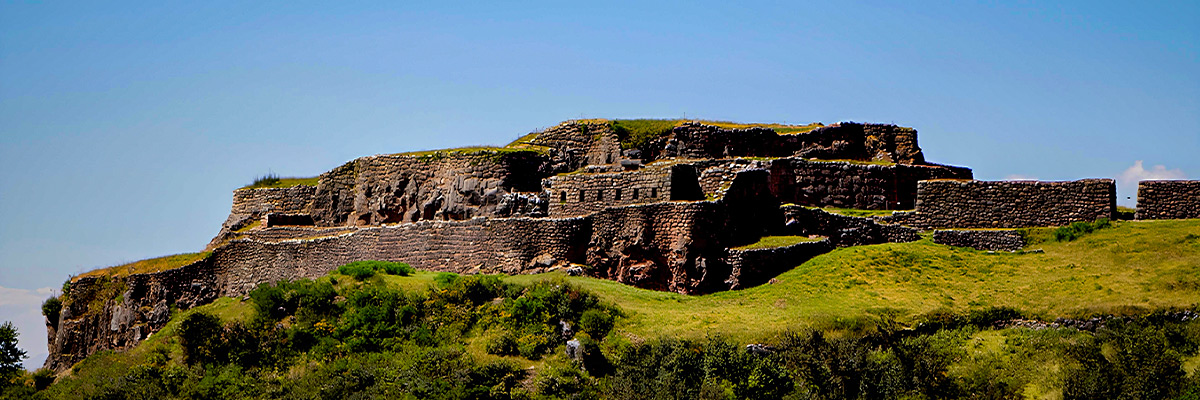
Unlike other Inca places where the stones were carved very carefully, in Puca Pucara the rocks have rougher surfaces, which suggests it was built more for practical use than for ceremonies. The walls are built with the limestone from the area, using medium and small blocks put together with surprising accuracy even though they are not regular shapes. This way of building has allowed the structure to strongly resist the frequent earthquakes in the Andes region.
The site has an interesting feature: it was built on three levels, which shows a smart use of space and a clear order of importance. Below, each of these levels is described:
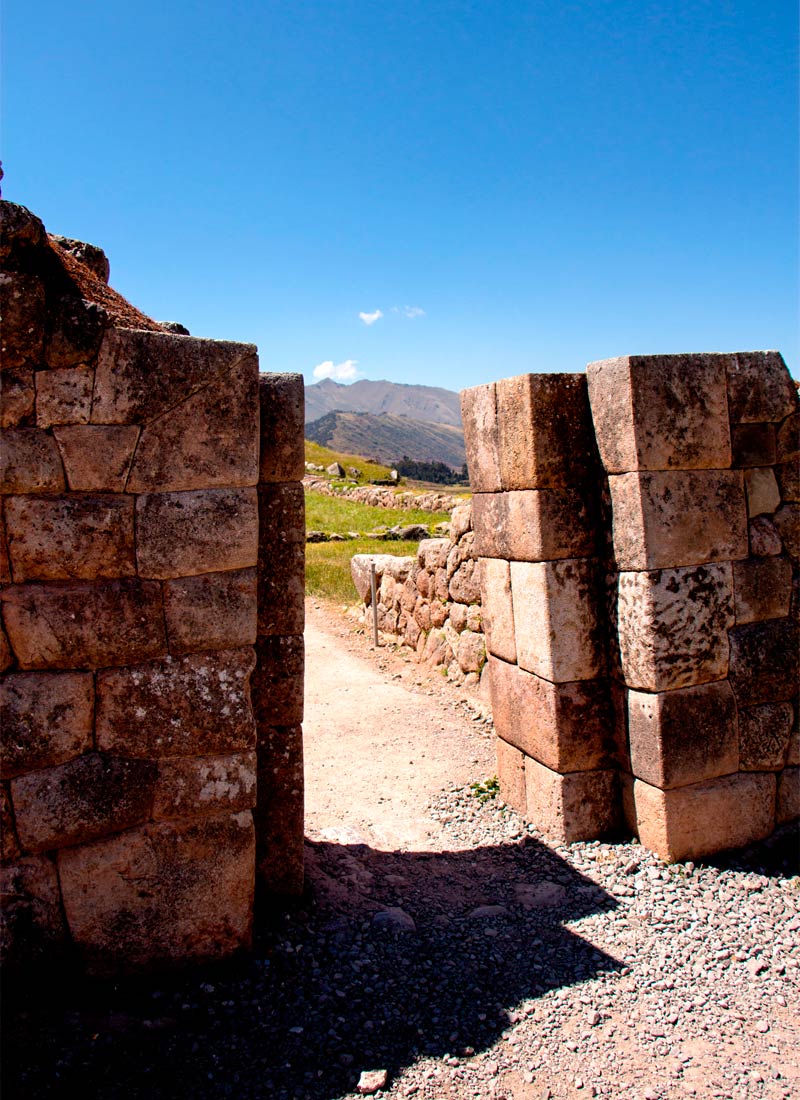 | 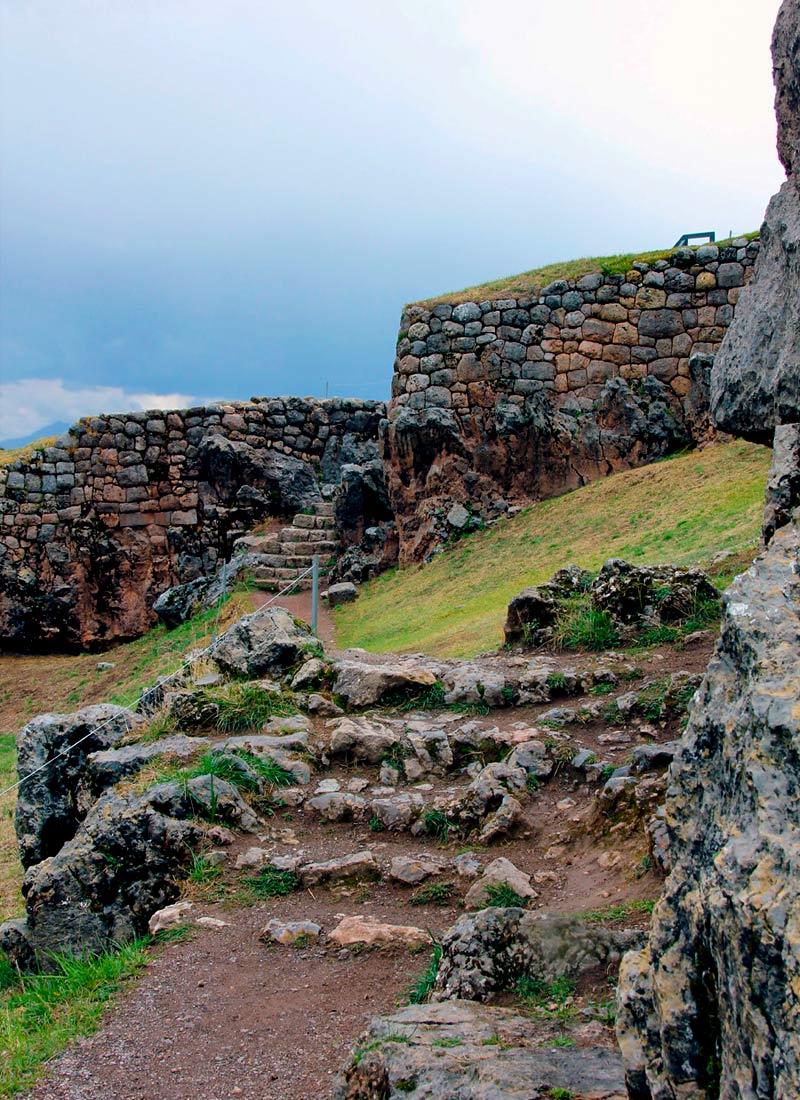 | 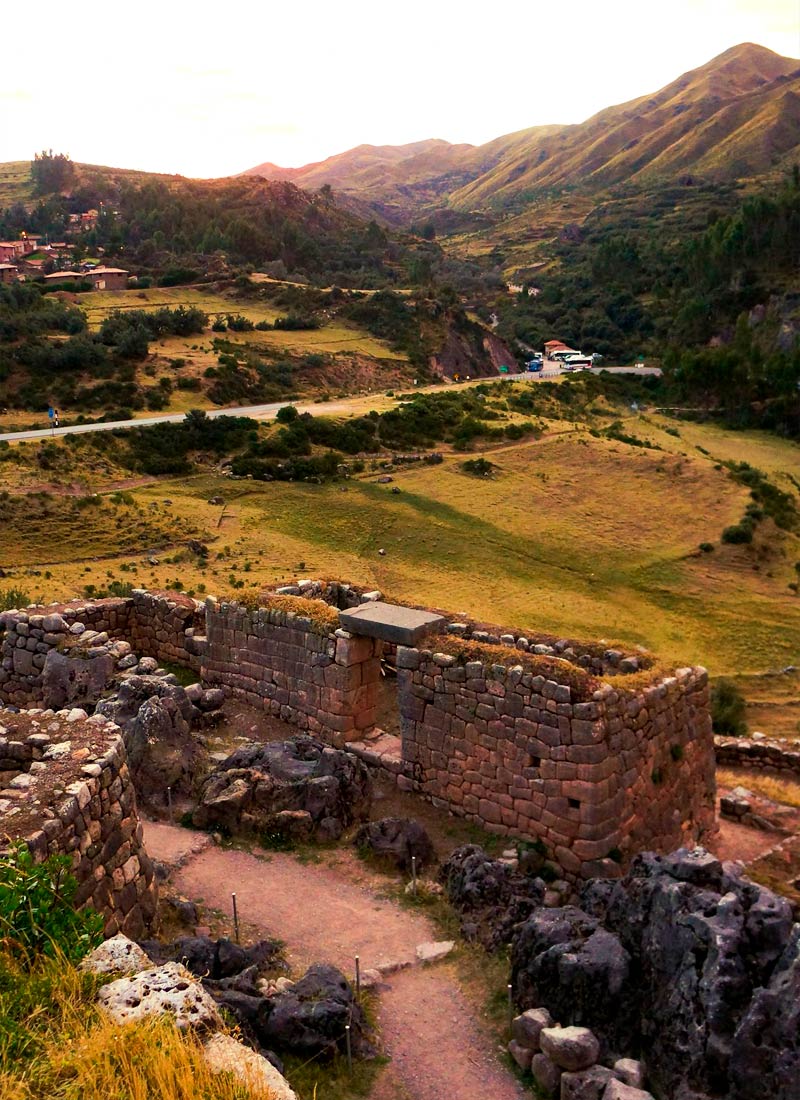 D D |
The climate of Puca Pucara, like Cusco, has two well-defined seasons, such as the rainy season and the dry season. The rainy season covers the months of November to March, while the dry season covers the months from April to October approximately.
The altitude of Puca Pucara is 3,680 meters.
In order to travel to a place and enjoy the landscape, it is necessary to know when is the best season, this time the best season to get to know Puca Pucara in Cusco, is during the dry season between the months from April to October.
It is recommended this season because the presence of rain is minimal, thus having a clear blue sky during the day and it is necessary to have a hat and sunscreen to avoid damage to the skin, caused by the sun's rays.
While at night, it is recommended to wear warm clothing, because Cusco nights are cold. However, they do not take away the magic of its streets, people and history.
Getting to Puca Pucara is not complicated, since there are various forms of mobilization, it can be walking or through public transport or through a mobile belonging to a tourist agency.
In the case of reaching Puca Pucara by walking from the Main Square in Cusco, it will take you approximately 45 minutes, while if you use the public service from Av. Cultura, it will take you approximately 30 minutes to arrive and if you have the service of a City Tour Cusco, as it will take you approximately 20 minutes.
The natural area around Puca Pucara makes the fortress even better, because from its platforms you can see an amazing view of the Cusco valley and the paths that connected the different holy places of the region. So, if you are interested in visiting this old site, then you should keep these points in mind:
Full Tourist Ticket:
Partial Tourist Ticket:
Note: The Full Tourist Ticket is good for 10 days and lets you enter 16 tourist spots, including Pisac, Chinchero, Ollantaytambo and more. The Partial Tourist Ticket is only good for one day and only lets you enter Sacsayhuamán, Q’enqo, Tambomachay and Puca Pucara. |
The easiest, most informative, and best way to see Puca Pucara is with the Cusco City Tour, one of the most popular trips for visitors. This guided tour includes entry and a visit to the main old sites near the city, such as:
The City Tour includes transportation, a guide, and in some cases, entrance tickets (you should check if the Cusco Tourist Ticket is included or if you need to buy it separately). This makes it the best choice for those who want a full tour of Cusco and to visit all its attractions.
No. The archaeological site is totally safe. It has wide paths and well-defined stairways. Altitude sickness can cause some discomfort to visitors, so it is recommended to drink plenty of water.
It is recommended to bring: rain poncho, sunscreen, mosquito repellent, a cap (or hat), comfortable clothing, hiking shoes, snacks, rehydrating water, extra cash and identity documents.
Yes. At the entrance door of Puca Pucara you can get tour guide service. Although most visitors choose to go with the City Tour, which already includes the tour guide service.
You can go to Puca Pucara by public transport from the stop of ‘Rosaspata’ in the city of Cusco. The cost of the trip is only 1 Peruvian sol. You can go in the service called 'Señor del Huerto'.
The climate in Puka Pukara is temperate and cold, with temperatures that vary from 22ºC. up to 3ºC. (at night). Most visitors visit in the afternoon, when the temperature is 15ºC.
According to experts, the visit is best during the dry season (from April to October). On those days the rains are not frequent and the day is sunnier. Thus, the tourist will be able to make his journey without inconvenience.
Tambomachay is located just a few steps from Puca Pucara, making it the first option for a nearby visit. Other options are to visit Qenqo and the fortress of Sacsayhuaman. The entrance to all these places is included in the ‘Cusco Tourist Ticket’.